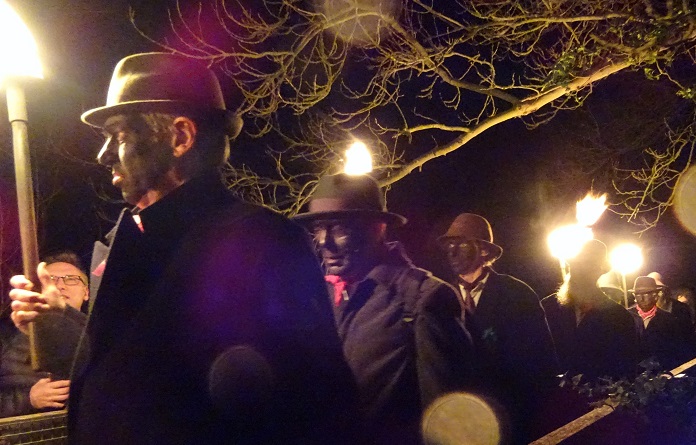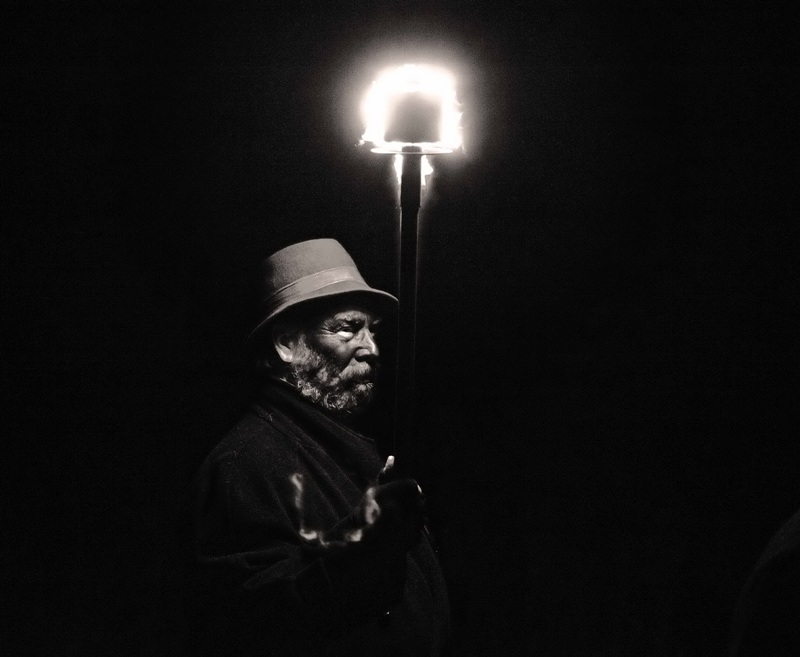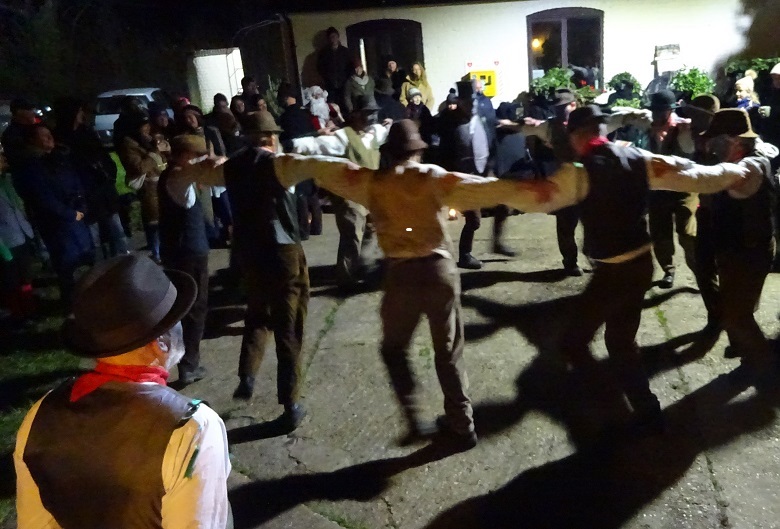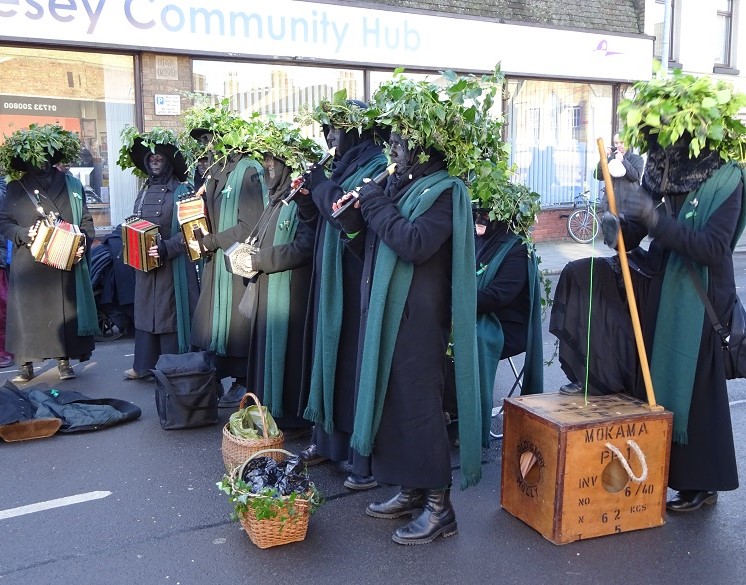The following article written by David Bartlett, singer with Bury St Edmunds-based acapella folk singers Sound Tradition, first appeared on 23rd February 2024 in the Folk column of the Bury Free Press. It was much admired and appreciated by Old Glory.
In the Belly of the Mother
Imbolc is a traditional Gaelic festival marking the beginning of Spring. 1st February seems a bit early for that but then again maybe not so much in these times of changing temperatures. The word – Imbolc – actually means: ‘in the belly of the mother’ suggesting that the seeds of Spring are beginning to stir and it takes place halfway between the Winter solstice -Yule- and the Spring equinox – Ostara. This year I celebrated it in the evening darkness of February 2nd with my favourite dancing side: Old Glory Molly. And a few very fine ales. For the uninitiated Molly dancing is a form of Morris dance traditionally done by out-of-work ploughboys in Mid-Winter. It died out in the 1930s but since the 1970s has enjoyed a revival notably in East Anglia and the East Midlands.
The dancing and the beer drinking took place at The Locks Inn in Geldeston, a community-owned establishment right on the Norfolk and Suffolk border. This pleasantly remote riverside public house is only accessible via a long, unmade track which keeps quite a few cars away and adds to its unique charm. The name Geldeston comes from the Old English ‘Gyldi’s Enclosure’ and is first mentioned in 1242 – there were certainly moments during this superb re-enactment of Edwardian Molly dancing that I felt like I’d gone back a century or so.

Eight pm on the dot. With immaculate choreography a parade of Molly dancers appears from the dark of the riverside brandishing high-held flame-flag torches, they march slowly amidst the ominous pedestrian beat of a bass drum. No hurrying here - just a sense of inevitability as dark-hatted overcoated figures grow closer and black-cloaked musicians alive with ivy head-dresses approach the hardstanding in front of the pub. Apparently, in the past, they sometimes demanded money with menaces. Well, they got that right – the look was vacant, starey and don’t-mess-with. An unpretentious gem of performance art.
The night here is black as a cloak. The dark sticks to you like clay on boots – cloyingly close. It’s cold - the cold of river valleys. The Molly broom-man and others mark out a dance stage with paraffin lamps and staring. And four stand sentinel at the corners.
The dancing is a seemingly effortless mix of metronomic hobnail-clomping, bent arm swings, stopping-and-turning, knee raising (lower leg loosely hanging), face-to-face shoulder clutching, clasping arms in rings, and last-minute, swift-footed dodging. A wonderfully well-practised performance that is totally beguiling and unbelievably cool. All this with an accurate but pleasantly-almost-hesitant accompaniment on melodeon, recorder, drum, and tea-chest bass. All delightfully hypnotic. The musicians are all women. The dancers all men. The result is traditional folk heaven.
Old Glory Musicians seen here at Whittlesea 2016
Silky-backed waistcoats – with their peeping braces - reflect some light. After dances are over overcoats are donned for warmth – most is done in silence. There is no bowing or fawning to the crowd. The box-man collects for charity.
I bought another beer and then went back out to catch the last of the magic. I found a different place to stand and watch – a little corner to cosset me. I was transported. I had beer, atmosphere, music, and glorious Molly dancing. What better way to celebrate Imbolc: in the belly of the Mother”.
It is always best to see Old Glory for yourselves but, if you can't get to the Waveney Valley, or if it's summer time, you can get a wonderful insight into the origins of Old Glory from this short film https://old-glory.org.uk/paulaldis.html made by Will Hanke, using vintage camera equipment. The film includes an interview with Paul and Kathryn Aldis who, with Ken and Daphne May, founded the side in 1994.




